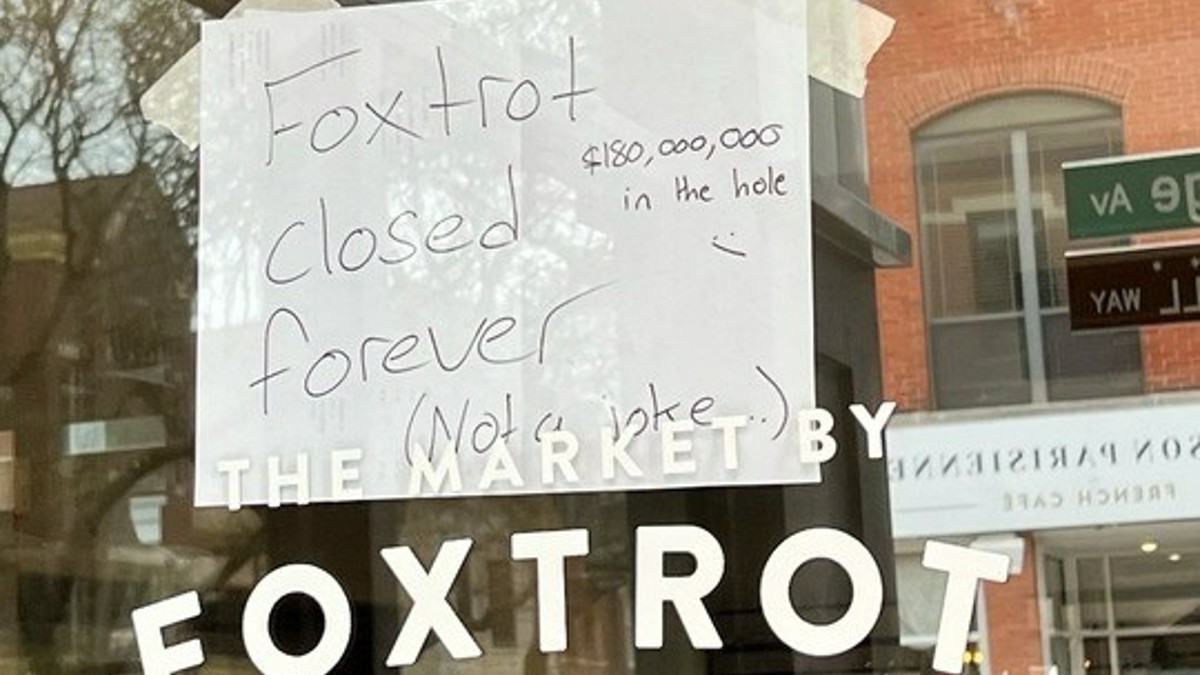On May 23, Bending Branch Winery in Comfort received 13 inches of rain in 12 hours, says John Rivenburgh, Bending Branch's director of winery and vineyard management.
Just down the road at Singing Water Vineyards, those 13 inches turned a picturesque creek into a raging river.
"It flows in back of the winery and tasting room. Normally, it's a little creek and you can dip your ankles in," said Ann Holmberg, vice president of Singing Water. "Suddenly, it appeared to be 20 feet deep, and the parking lot was a lake."
The San Antonio Express-News reports in total, May clocked in as Texas' wettest month on record, and the heavy rains were followed by showers in June. For Texas farmers plagued by years of drought, this deluge seemed like a godsend.
Yet, grape growers didn't see it quite the same way.
"The rain put a significant amount of fungal disease pressure on the vines, and if you didn't catch it early enough or didn't know what to do, you lost a lot of fruit," said Carl Hudson, wine educator at 4.0 Cellars, a collaborative tasting room that represents Brennan Vineyards of Comanche, Lost Oak Winery of Burleson and McPherson Cellars of Lubbock.
Despite some losses throughout the state, Hudson maintains this will be a banner year for Texas grapes.
Local
The latest news from around North Texas.
"It will be the biggest vintage in Texas history, no question," he said.
Great yields, Hudson added, don't necessarily mean great wine, though. Although there are different views on this, some winemakers argue there's a finite amount of nutrients per vine, and sometimes greater yields per vine can dilute the flavor.
In any case, the success of the wine from 2015 grapes won't be determined until the wines are released, starting in 2016 for whites and 2017 for reds.
What the bounty definitely means, though, is that more Texas wineries will be able to make wine with only Texas grapes. In the past, because of a lack of grapes in the state, some winemakers would turn to California for their grapes.
Bending Branch Winery experienced significant loss of its estate crop because of the rain. Yet John Rivenburgh, winemaker and co-founder of Bending Branch, echoed Hudson's optimistic sentiments.
"This is probably going to the best years the Texas wine industry has had as a whole in seven to 10 years," he said.
For Bending Branch, and pretty much all Texas wineries, much of the grapes used for winemaking come from vineyards all around the state.
"I've been talking to one of our growers in the High Plains (Neal Newsom of Newsom Family Vineyards in Plains), and he said this is the best cabernet sauvignon crop he's seen in the last 10 years," Rivenburgh said.
"Down here (in the Hill Country), it's been pretty much what we projected, but in the High Plains, it's still rolling in," said Julie Kuhlken, co-owner of Pedernales Cellars. "It's going to be a bumper crop."
"I'll take rain over three years of drought," said Bret Perrenoud, vineyard manager at Becker Vineyards in Stonewall, in a Texas Fine Wine news release. "And the silver lining is that we had no spring frosts."
At Robert Clay Vineyards in Mason, a fledgling vineyard the San Antonio Express-News followed in a series for more than a year, owner Dan McLaughlin was happy to report his vineyard was having a great year and hadn't had any issues with fungal disease thanks to a spray program it put in place. McLaughlin sold several tons of grapes to other wineries and kept 15 tons for Robert Clay's winemaking.
In Bandera County, Lost Maples Winery at Polvadeau Vineyards harvested its biggest crop of lenoir grapes since the operation started in 2006. With the help of a bevy of volunteers several weekends ago, owners Tom and Glenda Slaughter saw around 13 tons of grapes picked off their vines on land that has been in Glenda Slaughter's family since Texas was a republic.
"In May and June, we had to fight a lot of fungus problems, but once it started drying out, the plants came back to life again," Glenda Slaughter said. "I think a lot of times, the more stress a plant has, the better the grape is."
Late spring frosts in both 2013 and 2014 did a number on many grapes varieties such as sangiovese, viognier and nero d'avola throughout the state, but growers are seeing a comeback this year.
"For the last two years, some of our premier grapes -- and ultimately wines -- have been unavailable since we lost them to the freezes. This year we'll be able to make our viognier and nero dAvola. We are delighted with both the quality and quantity of the grapes so far," said Pat Brennan, owner of Brennan Vineyards.
Dave Reilly, winemaker for Duchman Family Winery, is welcoming the return of quality sangiovese grapes which were damaged in 2013.
In addition to seasoned growers' glowing reports, Rivenburgh is excited about new sources for grapes, such as first-year fruit from Lahey Vineyards, which was a custom planting project for Bending Branch.
Since young vines produce less fruit, they normally aren't harvested until the third or fourth year. But the quality and quantity of grapes so far has exceeded, so they're being harvested in just their second year, Rivenburgh said.
An increase in tannat grapes also is a source of excitement for Bending Branch, which has been championing the variety for years in Texas.
It does well in Texas' soil and climate, and its 2012 Bending Branch Winery Estate Tannat CM won a gold medal at the 2015 TEXSOM International wine competition and was named Best in Show by Texas Monthly.
"We'll have tannat from so many sources that we've never had before," Rivenbrugh said. "When we started in this business, there was no tannat to be had."
As for how the wines from this year's grapes actually will taste, we will have to wait and see.
"We still don't know," Kuhlken said as she superstitiously knocked on a wooden wine barrel in Pedernales' underground barrel cellar.
Sometimes, it seems there can even be a negative correlation between quantity and quality; less fruit can be mean better flavor, but not always.
"I would argue, 2011, which was horrible for quantity, was actually best for quality. You can't lump them side by side," Rivenbrugh said. "In 2011 . we had no pests, no fungus, no water -- we had total control over what makes fruit better. It was a real eye-opener for those who do large farming to see their quantity levels drop but their quality levels change exponentially," he said.
Since this year is yielding such abundant fruit, a concern for 4.0 Cellars' Husdon is over-cropping.
"The vine can only deliver so much nutrient to the fruit that is hanging. If you have 30 clusters on a vine vs. 20, the 30 are going to have less flavor, less concentration and get less ripe than the 20 clusters on the neighboring vine."
To avoid overcropping, Hudson explains that growers have to practice green pruning where they cut off green grape clusters.
"It's a very difficult job. I've cried through many a green pruning procession because you're dropping money on the floor," he said. "It's a contentious issue, and it will eventually sort itself out."
"Overcropping is a fear of mine every single year, regardless of rain," Rivenburgh said. But he also sympathizes with the farmers who for several years had terrible crops.
"If you have the benefit of extra tonnage so that you won't have to lose your farm . farmers have to pay bills, too," he said.
"In Texas, we are coming out of infancy in viticulture to toddlers," Rivenburgh explained. "But being a winemaker, we should know that, anticipate it, figure out how to make the best wine and do a good job with what we have."



